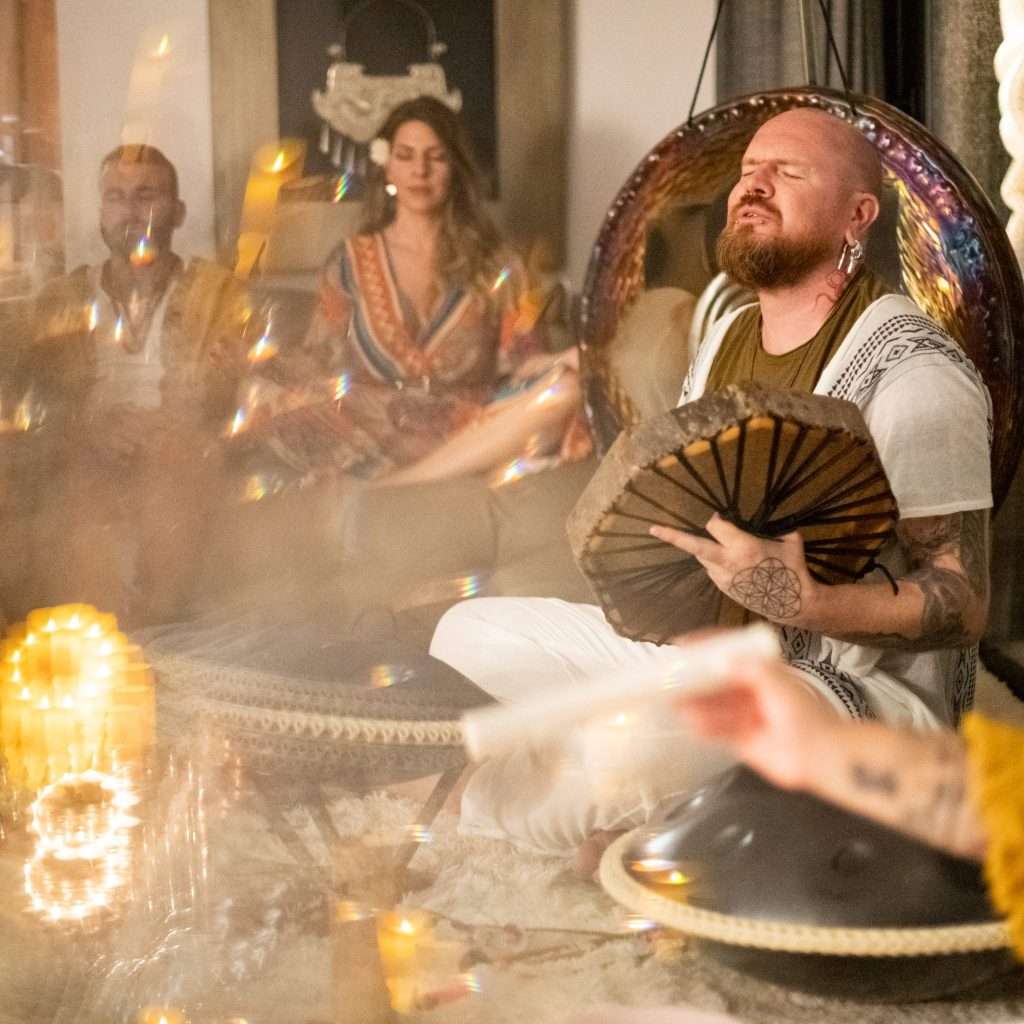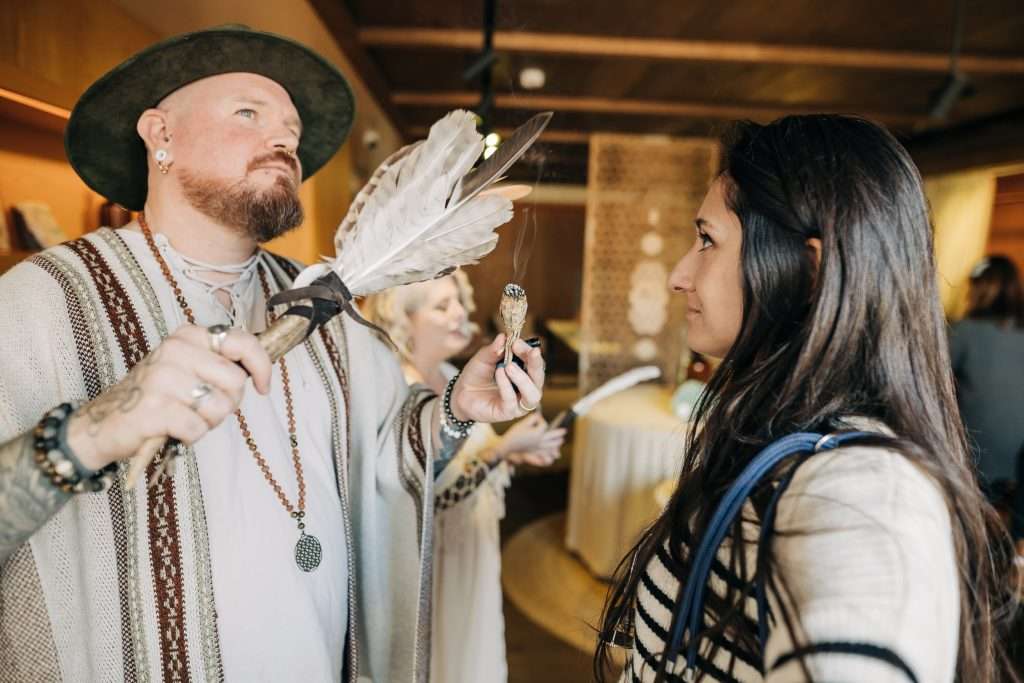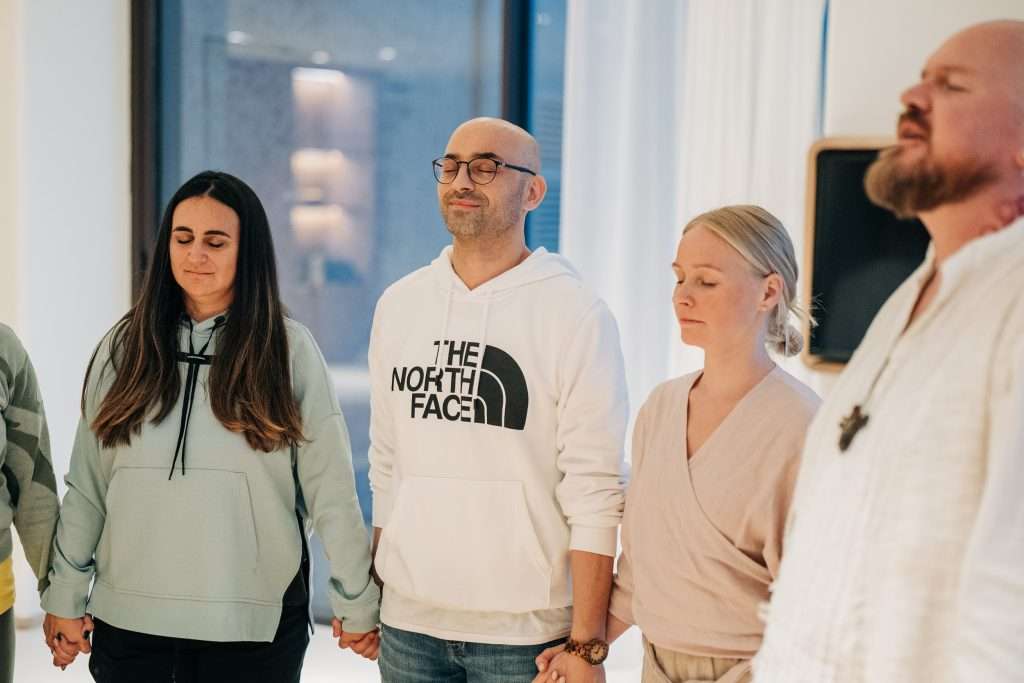
Introduction to Shamanic Coaching
What is Shamanic Coaching?
Imagine a life coach who doesn’t just focus on your career goals or mindset, but instead helps you connect to your soul’s path through ancient healing wisdom. That’s the essence of a shamanic coach. Shamanic coaching blends traditional shamanic principles—drawn from indigenous spiritual practices—with modern coaching methodologies. It’s a sacred journey where the coach acts as a guide, helping you navigate through your inner landscape to uncover emotional wounds, spiritual blocks, and paths to personal transformation.
Unlike conventional coaching, which tends to stay in the realm of logic and action steps, shamanic coaching dips deep into the unseen realms—your intuition, energy field, ancestral lineage, and spiritual consciousness. Through visualisation, ritual, and energy work, a shamanic coach assists you in reconnecting with your authentic self. This coaching style supports emotional healing, spiritual awakening, and energetic balance. It’s not about “fixing” you—it’s about awakening what’s already within you.
Clients often turn to shamanic coaches when they’re feeling lost, emotionally drained, or spiritually disconnected. Instead of offering surface-level advice, shamanic coaching facilitates a reconnection to inner truth and universal energy, often sparking breakthroughs that ripple out across all areas of life.
Origins and Cultural Roots of Shamanism
To understand shamanic coaching, we first need to grasp the deep roots of shamanism itself. Shamanism is not tied to one religion or location—it’s one of the oldest spiritual traditions known to humanity. Cultures from Siberia, Mongolia, the Amazon, North America, Europe and Africa have all held some form of shamanic practice for thousands of years. Despite the differences in geography and customs, the core principle remains the same: shamans act as intermediaries between the physical and spiritual worlds.
Despite having fallen from common knowledge and practice, shamans and shamanic practices would have been present in every culture, continent and country throughout history. It is only due to the proliferation of organised religions and their determination to dominate the popular culture that these practices were swept aside in the mainstream countries, but they have been and were present at some point in every country’s history.
Traditional shamans were healers, storytellers, and spiritual leaders. They entered altered states of consciousness—often through drumming, chanting, or natural medicines—to receive guidance from spirit allies, ancestors, and nature. The insights they received were used to heal individuals, resolve community conflicts, and restore balance between humans and the earth.
Shamanic coaching, while modernised for today’s audience, honours these traditions. Ethical coaches do not claim to be indigenous shamans unless they are trained within those cultures. Instead, they adapt the core healing frameworks—like journeying, spirit communication, and nature-based wisdom—into coaching sessions that support deep personal growth.
How Shamanism Evolved into Coaching
Over the last few decades, as Western culture has grown more open to holistic and spiritual practices, shamanism has slowly emerged from the shadows of misunderstanding and colonised interpretations. With that evolution came the rise of shamanic practitioners integrating their wisdom into new modalities, one of which is coaching.
Coaching itself exploded in popularity during the late 20th century as people began seeking support outside traditional therapy. Where therapists diagnose and treat mental health conditions, coaches work with individuals to empower them toward self-discovery and transformation. When shamanic tools were fused into this coaching model, the result was a more intuitive, spiritual, and energetic form of personal development.
This evolution wasn’t just a trendy mash-up but a natural fusion. After all, traditional shamans were community guides. Shamanic coaches carry that torch into today’s world, helping people align with purpose, shed past baggage, and feel whole again.

Core Principles of Shamanic Coaching
The Mind-Body-Spirit Connection
The foundation of shamanic coaching lies in recognising that we are more than just our minds. Mainstream coaching often emphasises mindset alone, but shamanic coaching taps into the full trifecta: mind, body, and spirit. Why? Because true healing and transformation occur when all three are in harmony.
Let’s break it down. Your mind holds your thoughts, beliefs, and patterns. Your body stores emotional memory and responds physically to your internal experiences. Your spirit is the essence of who you are—your soul, your higher self, your energetic blueprint. In shamanic coaching, all three are addressed simultaneously to create lasting change.
For instance, if someone is struggling with a fear of failure, a traditional coach might help them reframe their beliefs. A shamanic coach, however, might take them through a guided journey to uncover when that fear first took root—possibly in early childhood or even in ancestral memory—then energetically clear it through ritual or ceremony. The body is involved through grounding exercises or somatic release. Spirit is engaged through intention and soul connection.
This holistic method doesn’t just change how you think—it shifts how you feel, how you move, and how you live.
The Role of Nature and Energy in Healing
In shamanic coaching, nature isn’t just scenery—it’s medicine. The elements of earth, air, fire, and water are seen as allies, and every part of nature holds energetic wisdom. Trees, rivers, animals, even the moon, are all powerful symbols and energetic forces that support healing.
Coaches often encourage clients to connect with nature regularly, walking barefoot on the earth, sitting in stillness with a tree, or working with elements in ritual. This isn’t about being “woo-woo”—it’s about realignment. Nature is neutral, grounding, and restorative. When people feel lost or overwhelmed, nature brings them back to the now.
In addition to nature, energy itself is a key player. Everything is energy—our thoughts, emotions, intentions. Shamanic coaches work with the client’s luminous energy field, often referred to as the aura, to remove stagnancy, restore flow, and invite vitality. This might involve visualisation, hands-on energy healing, or even sound (like drumming or toning).
When your energy is clear and aligned, everything in life flows more easily. That’s the true power of energetic healing—it clears the invisible blocks that hold you back from visible success.
Responsibilities of a Shamanic Coach

Creating a Safe Sacred Space
One of the most vital responsibilities of a shamanic coach is to create a sacred and safe space for transformation. This space isn’t just physical—it’s also emotional and energetic. Clients entering a session must feel held, seen, and protected. A shamanic coach understands that real healing can only happen when a person feels truly safe to explore their shadows and inner truth.
This sacred space can be physical, like a room with candles, crystals, plants, and calming music. But more importantly, it’s the energetic space set through intention, ritual, and presence that allows the client to open up. Coaches might call in the directions, ancestors, or spirit allies to hold the space energetically. Some use smudging tools like sage or palo santo to clear energy before beginning.
Creating this kind of container involves deep listening, empathy, and non-judgment. Shamanic coaches never push their clients to go where they’re not ready. Instead, they gently guide, holding the frequency of safety and love, allowing the client’s soul to speak freely.
In this space, clients may cry, laugh, express anger, or even experience spiritual visions. The shamanic coach’s job is to hold that experience with reverence, guiding without interfering, and supporting without rescuing. It’s not about fixing—it’s about empowering the person to walk their own sacred path.
Acting as a Spiritual Guide
A shamanic coach isn’t a guru, and they’re not there to tell you what to do. Instead, they act as a guide, someone who’s walked the path of transformation and knows how to hold a lantern while you navigate your own terrain. They listen more than they speak, but when they do speak, their words are often steeped in ancient wisdom and intuitive insight.
Their role is to help you connect with your inner guidance and the wisdom of the unseen world. They may guide you on a shamanic journey to meet your spirit guides, animal allies, or even your higher self. These experiences are not just imagination—they’re deeply symbolic and energetic encounters that often lead to real-world clarity.
Through consistent sessions, your coach will help you recognise patterns, uncover limiting beliefs, and explore the spiritual roots of emotional wounds. Unlike therapists, who work from a psychological framework, shamanic coaches bring in metaphysical tools—dreamwork, past-life recall, ancestral healing, and soul retrieval—to assist in the journey.
They remind you that you are not alone. Spirit is always present. And with their guidance, you begin to trust not just them, but your own intuition, your own voice, and your own inner compass.
Facilitating Personal Growth and Healing
The ultimate role of a shamanic coach is to facilitate growth, not force it. Healing is not a linear process, and each individual walks their own timeline. Shamanic coaches are aware of this and honour the sacred unfolding of each client’s journey.
Through deep inner work, these coaches help you release emotional pain, rewrite your story, and reclaim your power. You may start by addressing surface-level challenges—relationship conflicts, burnout, confusion—and soon find yourself diving into childhood wounds, ancestral trauma, or spiritual disconnection. This isn’t always easy, but it’s always worth it.
With the support of a coach, clients often begin to embody new identities: more confident, spiritually aware, grounded, and aligned with purpose. This healing is felt not only in the heart and mind but in the body and energy field as well. Shifts occur in relationships, career choices, health, and even lifestyle.
A good shamanic coach knows that growth is not about getting somewhere. It’s about remembering who you really are and removing the layers that block your light. They’re there to walk beside you, encouraging, witnessing, and celebrating your unfolding.
Tools and Techniques Used in Shamanic Coaching
Journeying and Visualisation
One of the most powerful tools in a shamanic coach’s toolkit is the practice of shamanic journeying. This involves guiding clients into an altered state of consciousness, typically through drumming, rattling, or deep guided meditation, where they can access their inner world and spirit realm.
In this state, clients may “travel” to meet spirit guides, power animals, or ancestors. These beings often deliver messages, healing, or insight. The journeys aren’t about fantasy; they’re deeply symbolic experiences that offer mirrors to your subconscious. Every image, sound, or sensation that arises carries meaning and can lead to profound breakthroughs.
Visualisation is similar but usually more structured and led by the coach’s voice. It may involve healing a wounded inner child, stepping into a future self, or clearing energetic cords. The coach will guide you step-by-step, encouraging you to tune into what you’re seeing, hearing, feeling, and knowing.
These techniques help bypass the analytical mind and tap directly into intuition and emotion. The result? Deep clarity, emotional release, and spiritual alignment.

Energy Clearing and Balancing
Shamanic coaches are also skilled energy workers. They read and interact with the client’s energy field to identify imbalances or blocks. This might involve scanning the aura, using their hands to feel where energy is stuck, or intuitively receiving information from the client’s field.
Once imbalances are identified, the coach may use several methods to clear and rebalance:
- Smudging with herbs (sage, cedar, palo santo)
- Sound healing (drums, singing bowls, rattles)
- Hands-on or distance energy work (similar to Reiki)
- Chakra alignment techniques
- Breathwork and movement
The goal is to restore flow in the body’s energy system, which in turn affects mood, clarity, and physical wellness. Clients often leave feeling lighter, more peaceful, and more present.
These energetic resets aren’t just feel-good moments—they create real shifts in consciousness and open space for emotional healing and new behaviours to emerge.
Use of Animal Totems, Crystals, and Plant Medicine
In shamanic coaching, symbolic tools play a big role. Each object used in a session is not random—it carries energetic significance and spiritual meaning.
- Animal Totems: These are spirit animals that represent certain strengths, lessons, or energies. For example, a wolf might represent loyalty and intuition, while an owl symbolises wisdom and insight. Clients often discover their totems during guided journeys and are encouraged to develop a relationship with them for ongoing guidance.
- Crystals: Shamanic coaches may incorporate healing crystals into sessions, placing them on chakras or using them in rituals. Crystals like amethyst (intuition), obsidian (protection), and rose quartz (love) can amplify intention and shift energy.
- Plant Medicine (where legal and ethical): Some advanced coaches trained in indigenous traditions may offer sacred plant medicine ceremonies, like cacao, rapé (pronounced Ha-pee), or even ayahuasca (in legal contexts)—to support deep healing. These are never taken lightly and require deep preparation and integration.
Even without ingesting plants, many coaches work with plant spirits energetically, inviting their wisdom into rituals and visualisations. This deepens the client’s connection to nature and expands their spiritual awareness.

The Shamanic Coaching Process
The Initial Discovery Session
Before the real magic begins, the journey starts with a discovery session. This isn’t just a casual conversation—it’s a foundational meeting where the coach and client establish trust, explore the client’s intentions, and discuss how the process will unfold.
In this session, the coach will usually ask questions like:
- What brings you here?
- What patterns or challenges are showing up?
- What’s your relationship with your intuition or spirituality?
- What kind of transformation are you seeking?
Based on these answers, the coach may offer an energetic reading or intuitive feedback. They may lead the client through a brief grounding or visualisation exercise to tune in to their energy. This session sets the tone—it’s the energetic handshake that begins the coaching relationship.
From here, the coach outlines a path forward. Some work in structured programs (e.g., 6-week transformation), while others take a more fluid, intuitive approach. Either way, it’s collaborative and entirely tailored to the client’s journey.
Goal Setting and Intention Work
In shamanic coaching, goal setting goes far deeper than just listing what you want to achieve. It’s about setting intentions that align with your soul’s evolution. This is a heart-centred process where the focus isn’t only on external results like getting a promotion or starting a business, but on how you want to feel, who you want to become, and what energy you want to embody.
Intentions might sound like:
- “I want to feel grounded and at peace.”
- “I want to release the fear that keeps me stuck.”
- “I want to awaken my intuitive gifts.”
Shamanic coaches guide clients through rituals or ceremonies to set these intentions with clarity and power. This could involve journaling, candle work, oracle card pulls, or sacred invocations. They help you see what’s beneath the surface of your desire—what your soul is really asking for.
Unlike traditional coaching goals, which are time-bound and measurable, shamanic intentions are organic and evolving. You’re not chasing a result; you’re aligning with a vibration. And as you shift internally, the external changes naturally follow. The coach helps you check in with your intentions regularly, adjusting your path as your awareness grows.
Integration and Reflection Practices
Transformation isn’t about a single breakthrough—it’s about embodying the changes in your everyday life. That’s why integration is one of the most important phases in shamanic coaching. After a powerful journey, ritual, or energetic shift, you need time and tools to bring the insight into your actions, habits, and mindset.
Integration practices might include:
- Journaling to process emotions or visions
- Dream tracking to catch subconscious messages
- Meditation and breathwork for grounding
- Creating altars to anchor your intention in physical space
- Connecting with nature to stay rooted and clear
The coach supports you in making these practices part of your rhythm, not as chores, but as spiritual hygiene. They help you notice signs, synchronicities, and subtle shifts. You’ll likely revisit the same patterns with a deeper understanding each time, and your coach will be there to reflect your growth back to you.
Without integration, insights can fade into confusion. With it, you become a different version of yourself—one that’s more aligned, self-aware, and energetically clean.

Transformational Benefits of Working With a Shamanic Coach
Emotional Healing and Trauma Release
One of the most profound outcomes of shamanic coaching is emotional healing, especially the kind that traditional talk therapy doesn’t always reach. That’s because shamanic coaching works on the energetic and soul level, which is where trauma often hides.
Trauma doesn’t just live in memory—it lives in the body, in the nervous system, and in your energetic field. You might consciously “move on” from a painful experience, but still feel triggered, anxious, or unworthy without understanding why. A shamanic coach helps you locate these emotional wounds and gently guides you through releasing them.
Techniques like soul retrieval (calling back lost parts of your spirit), inner child healing, and ancestral clearing can bring immense relief. You may experience waves of emotion, physical release (like crying, yawning, or shaking), or sudden clarity. And afterwards, many clients report feeling lighter, clearer, and more present in their bodies.
This healing isn’t about reliving trauma—it’s about witnessing it, honouring it, and freeing yourself from its grip. With the right coach, you learn to hold compassion for all parts of yourself—and that’s where true transformation begins.
Spiritual Awakening and Alignment
Shamanic coaching often leads to a spiritual awakening. It’s not about following a religion or adopting a new belief system. It’s about remembering who you really are—a soul having a human experience—and aligning your life with that truth.
As you peel away layers of conditioning, fear, and self-doubt, you naturally reconnect with your intuition, your inner guidance, and the rhythms of the universe. You start to notice synchronicities. You feel more connected to nature, to others, and to your purpose. You begin to trust yourself in ways you never have before.
Clients often report moments of deep spiritual clarity during coaching, whether through a journey, a vision, or a sudden insight during reflection. These moments can feel like coming home to yourself.
And with awakening comes alignment. That means you start making choices based on your soul’s truth, not society’s expectations. Whether it’s changing careers, healing relationships, or pursuing creative dreams, your outer world begins to reflect your inner transformation.
Clarity, Purpose, and Empowerment
If you’ve ever felt lost or stuck in life, working with a shamanic coach can be like finding a map you didn’t know you had. One of the most celebrated benefits of this work is the clarity it brings—not just about what you want to do, but who you are here to be.
Through spiritual exploration, guided journeys, and intention work, you begin to see yourself and your path more clearly. You realise what’s been holding you back—limiting beliefs, ancestral baggage, unresolved emotions—and you start releasing it.
With each session, your confidence grows. You stop asking others for answers and start trusting your own voice. This isn’t just empowerment—it’s embodiment. You stop pretending to be something you’re not and start standing fully in your truth.
A good shamanic coach won’t tell you what your purpose is—they’ll help you remember it. And once you do, everything changes. Your energy shifts. Your relationships evolve. Your presence becomes magnetic. That’s the power of inner alignment—it unlocks everything else.
Who Can Benefit from Shamanic Coaching?
Individuals Facing Life Transitions
Shamanic coaching is incredibly effective for people navigating big life shifts—whether it’s a career change, a divorce, a spiritual crisis, or a major health challenge. These transitions often leave us feeling disoriented and disconnected, and that’s exactly where a shamanic coach can help.
Rather than just giving advice, they hold space for you to process, release, and reframe the experience from a soul perspective. You’re not just figuring out what’s next—you’re finding meaning in what’s happened and using it as fuel for your growth.
Through ritual, ceremony, and energy work, you learn to see transitions as initiations—powerful invitations to evolve. And instead of surviving change, you begin to alchemise it.
Those Seeking Deeper Self-Connection
In our noisy, fast-paced world, many people feel disconnected from their true selves. They might look successful on the outside, but feel empty or numb on the inside. Shamanic coaching offers a sacred mirror for rediscovering your essence.
You’ll be guided to explore your inner landscape—your intuition, your emotional truth, your soul’s desires. Through consistent practices and spiritual tools, you’ll build a relationship with yourself that’s rooted in compassion, curiosity, and trust.
This kind of self-connection doesn’t just feel good—it changes everything. When you know yourself deeply, you set better boundaries, make aligned decisions, and attract relationships that nourish you. You stop looking for answers outside of yourself and start living from your own truth.
People Exploring Spirituality or Energy Healing
If you’re new to spirituality or energy work, shamanic coaching can be a powerful (and safe) entry point. It’s not about dogma or rules—it’s about exploring the sacred in a way that feels personal and empowering.
A good coach will meet you where you are, offering tools and insights without judgment or pressure. Whether you want to connect with your spirit guides, explore past lives, or simply develop your intuition, shamanic coaching provides a grounded, heart-centred path.
You’ll learn how to work with energy, how to listen to your body’s wisdom, and how to stay spiritually protected and aligned. This foundation can support you in every area of life—from relationships to creativity to physical health.

Differences Between Shamanic Coaching and Traditional Therapy
Holistic vs. Clinical Approaches
While both shamanic coaching and traditional therapy support healing and personal growth, they operate on very different wavelengths. Traditional therapy is rooted in psychology and clinical frameworks, focusing largely on the mind, thought patterns, behaviours, and emotional processing. It often involves diagnosis and treatment plans, and therapists typically work within the bounds of evidence-based methods.
Shamanic coaching, on the other hand, approaches healing from a holistic and spiritual perspective. It recognises the mind but also engages the body, energy field, and soul. There are no diagnoses or clinical treatments—there is instead an invitation to explore the spiritual roots of suffering, often through ritual, energy work, and intuitive guidance.
In essence, therapy often focuses on healing the past through understanding, while shamanic coaching seeks to transform your relationship to the present and future through energetic alignment and spiritual awakening.
Role of the Spirit World
In traditional therapy, the spirit world simply doesn’t exist as part of the framework. But in shamanic coaching, the spirit realm is not only real—it’s integral to the healing process. This includes guides, ancestors, power animals, and elemental energies.
These spirit allies are seen as companions and co-healers. A coach may lead you on a journey to meet your guides, retrieve lost soul fragments, or receive messages from ancestors. While this might seem unusual to the rational mind, clients often report deeply emotional and transformational experiences that resonate at a soul level.
The presence of the spirit world introduces a sacred dimension to the healing process—one that fosters humility, reverence, and a sense of belonging to something greater.
Personalised Energetic Experiences
Traditional therapy tends to use structured methodologies that apply to many people: CBT, EMDR, talk therapy, etc. While useful, these methods are often uniform.
Shamanic coaching is radically personalised. Every session may be different—guided by your energy, the messages from spirit, and your soul’s current needs. Some sessions might be ceremonial; others might involve intense inner work or soft reflection. There are no formulas—just flow.
This allows shamanic coaching to adapt to the individual’s soul journey, which makes it particularly effective for those who feel that conventional methods are missing something deeper.
What to Expect in a Session with a Shamanic Coach
Session Structure and Flow
Sessions with a shamanic coach typically begin with a grounding ritual—maybe a few breaths, a prayer, or lighting a candle. From there, the coach may ask intuitive questions to tune into where you’re at mentally, emotionally, and energetically.
They might guide you through:
- A shamanic journey
- Energy clearing
- An illumination ceremony
- Past life regression
- Shadow work or inner child healing
- Ancestral work
- Visualisation or embodiment practices
Each session is intuitive and tailored. Coaches act as space holders, energetic mirrors, and spiritual guides. You’ll be invited to tune into your body, your emotions, and your spirit—not just your words.
Sessions typically last 90–120 minutes and often include practices or journal prompts for integration.
Common Emotional and Physical Responses
Shamanic work goes deep, so it’s common to experience strong emotional release—crying, laughter, anger, shaking. Your body might respond with tingling, warmth, or fatigue. These are all signs of energy moving and healing taking place.
After a session, you may feel:
- Deep peace or lightness
- Physical exhaustion or sleepiness
- Heightened intuition or vivid dreams
- Emotional vulnerability or euphoria
It’s important to honour your body and give yourself rest, nourishment, and reflection time.
Post-Session Support and Integration
Good shamanic coaches don’t just drop you after a session—they offer tools for integration. This might include:
- Journaling prompts
- Rituals to continue at home
- Affirmations or meditations
- A follow-up session to process deeper layers
Integration is essential—it turns insights into lived transformation. The more you engage with the practices between sessions, the more potent and lasting the shifts become.
Choosing the Right Shamanic Coach for You
Key Qualities to Look For
When seeking a shamanic coach, trust your gut—but also do your research. Look for:
- Training in shamanic and energy healing practices
- Strong ethical boundaries
- A grounded, non-dogmatic approach
- A trauma-informed and culturally respectful practice
- Testimonials or referrals from trusted sources
You should feel a resonance with their energy, their language, and the way they speak about spirit and healing.
Questions to Ask Before Hiring
Before committing, ask:
- What is your background or lineage in shamanic practice?
- How do you structure your sessions?
- Are you trauma-informed?
- How do you ensure client safety and spiritual hygiene?
- What are your ethics around plant medicine (if relevant)?
The answers to these questions will give you insight into their integrity and alignment.
Red Flags and Ethical Considerations
Be cautious of anyone who:
- Promises “quick fixes” or spiritual miracles
- Encourages dependency
- Claims to be a shaman without training or lineage
- Uses manipulative or fear-based language
- Pushes you beyond your readiness
Shamanic coaching should be empowering, not disempowering. Trust your intuition—if something feels off, it probably is.

Integrating Shamanic Practices into Daily Life
Daily Rituals and Mindfulness Techniques
You don’t need a coach beside you 24/7 to live a spiritually aligned life. Shamanic coaching teaches you how to bring the sacred into the mundane. Simple daily rituals like:
- Lighting a candle with intention
- Journaling with spirit guidance
- Practising breathwork or grounding meditations
- Giving thanks to the elements
These rituals anchor your energy and keep you connected to the unseen.
Building a Relationship with Nature
Nature is your greatest teacher in shamanic practice. Daily walks, sitting with a tree, working with herbs, or watching the moon phases can bring you into deeper harmony. Coaches often encourage clients to have “nature dates” to recharge their spirit and remember their place in the web of life.
Keeping the Energetic Field Clear
Energetic hygiene is essential. Practices like aura cleansing, chakra balancing, and cutting cords help you stay clear and focused. Your coach may teach you how to do this with visualisation, crystals, or sacred smoke.
Staying energetically clean helps you move through life with clarity and confidence, reducing emotional overwhelm and spiritual fatigue.
Challenges and Misconceptions about Shamanic Coaching
Common Misunderstandings
Some people think shamanic coaching is “woo-woo,” cult-like, or unscientific. The truth? It’s rooted in thousands of years of global wisdom, and while it may not look clinical, its results are often profound.
Others assume you need to be “spiritual” or “believe” in certain things. But shamanic coaching works with your belief system, not against it.
Navigating Scepticism
It’s okay to be sceptical. In fact, healthy scepticism can protect you from spiritual manipulation. The key is to stay open while honouring your intuition. If you’re curious but unsure, try a single session or talk to others who’ve walked the path. Often, the experience speaks for itself.
Ensuring Safe and Respectful Practice
Always make sure your coach respects cultural traditions, avoids cultural appropriation, and practices ethically. Authentic shamanic coaching honours the origins of these sacred teachings and never uses them for ego or profit.
The Future of Shamanic Coaching in Modern Society
Growing Interest and Acceptance
As collective consciousness rises, more people are seeking spiritual alternatives to healing and growth. Shamanic coaching is becoming more mainstream—not as a trend, but as a return to ancient wisdom in a modern world.
Technology and Digital Sessions
Virtual sessions make shamanic coaching more accessible than ever. Distance energy work and online journeys can be just as effective as in-person experiences, especially when intention and presence are strong.
Opportunities for Training and Certification
Many schools now offer shamanic coach training. While there is no universal credential, look for programs that are trauma-informed, rooted in authentic lineages, and prioritise ethical integrity.
Shamanic coaching isn’t about escaping your reality—it’s about transforming it from the inside out. By combining ancient wisdom with modern guidance, a shamanic coach helps you reconnect with your soul, release old wounds, and align with your true purpose. Whether you’re grieving, awakening, or simply feeling lost, this sacred support can guide you home to yourself.

FAQs
1. What qualifications should a shamanic coach have?
While there’s no official certification, a qualified coach should have training in shamanic practices, energy work, and trauma-informed care. They should also have integrity, strong boundaries, and a deep commitment to client well-being.
2. Is shamanic coaching safe for everyone?
Generally, yes—but it’s not a substitute for clinical therapy in cases of severe trauma or mental illness. Always inform your coach about your background, and choose someone trained in ethical and trauma-aware practices.
3. Can I combine shamanic coaching with other therapies?
Absolutely. Many people use shamanic coaching alongside talk therapy, Reiki, or other healing modalities for a more complete experience.
4. How long does it take to see results?
Some clients feel shifts after one session, while others need several months to fully integrate the work. It depends on your intention, consistency, and openness to the process.
5. Are virtual shamanic coaching sessions effective?
Yes. Energy transcends space and time. Virtual sessions can be just as powerful as in-person ones when approached with presence and sincerity.
Do you feel called to shamanic coaching?
If you would like to have a call with me to discuss how shamanic coaching can help you in your life and journey, then please visit my shamanic coaching page for more information on how I work or book a discovery call by clicking the button below.
Subscribe to My Newsletter
If you would like to keep up to date on all the exciting events, news, information and free healings and meditations available here at Shaman of Brighton subscribe to our newsletter!
Let me know your month of birth and receive a special birthday gift for that month!





